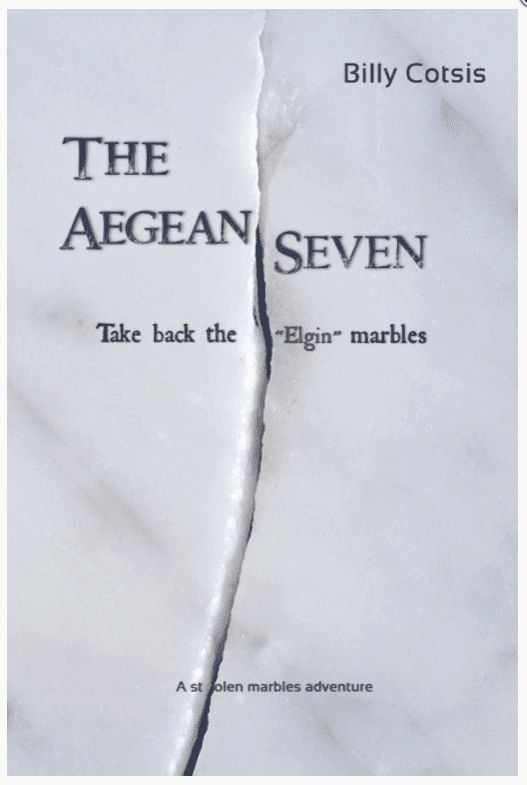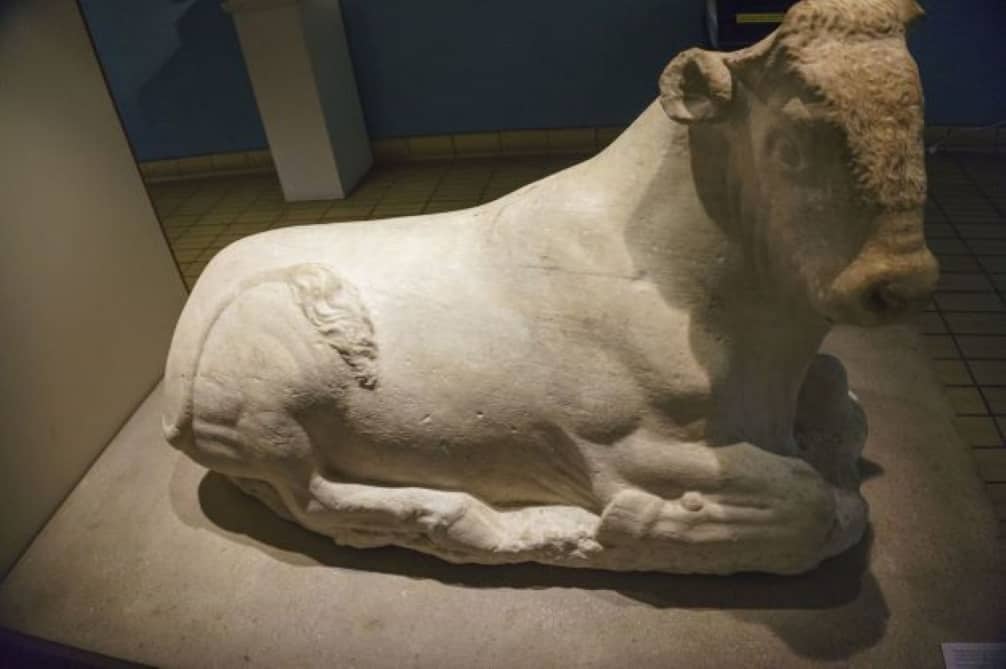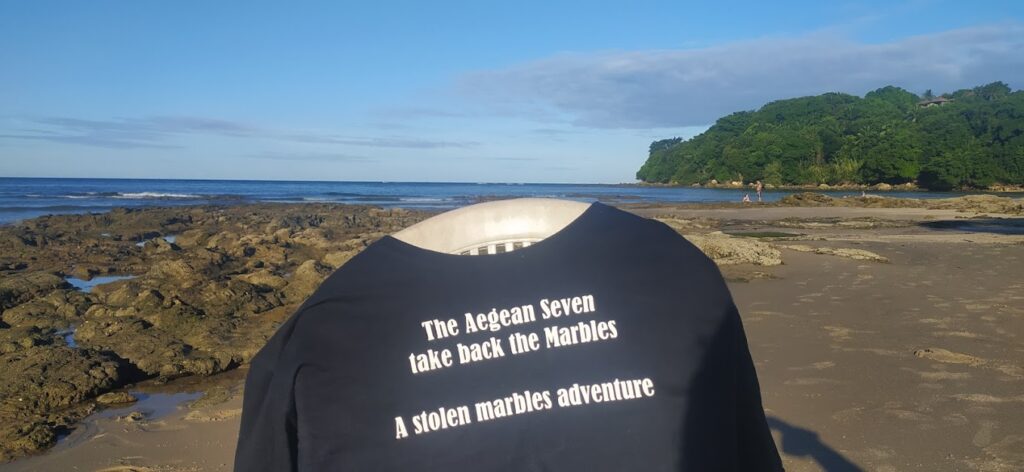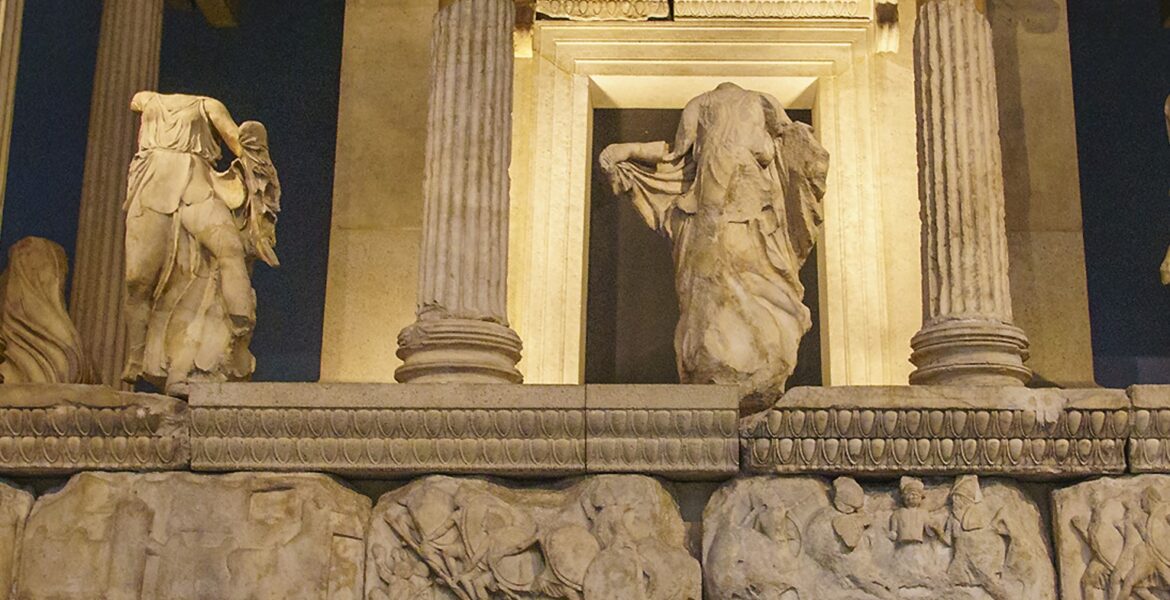A new historical fiction from Billy Cotsis tells a tale of how Athens lost the Marbles and how a newly formed posse, Aegean Seven, take back the stolen Marbles.
When an Earl from ‘Elgin’ visits the Acropolis with a Neapolitan artist, it sets in motion a chain of events that leads to the theft of monuments from the sacred Acropolis. Taken away, never to be seen again in Athens.
The curse of the Stolen Marbles and artefacts leads to a series of twists and turns that seemingly brings together, the ‘Aegean Seven’ to help reunite the artefacts with their homeland. The Aegean Seven are a composite group of Hellenes and Phil-Hellenes such as Lord Byron.
The new historical fiction from Billy Cotsis asks the questions, what would happen if the Aegean Seven attempted to take property from the Earl, including his own personal marbles from his body? What would happen if they enlisted Lord Byron to help bring the Marbles home?

Cotsis wrote the novel as a way to draw attention to the fact the Marbles were taken from Greece with a fake Firman (a permit from the Sultan) and why the Marbles need to come home.
“The aim of the book is to highlight how the Firman wasn’t real. The Sultan did not issue an order to let the British Ambassador take priceless artefacts facts from the Acropolis and other parts of Greece. The Sultan had jurisdiction over temples and ancient ruins, these were treated as his own personally property. You can call the Ottoman Sultans what you want, many were ruthless, but they did not go around giving away their ‘property’ to appease the British. He simply did not issue a directive to give anything to the Scottish Earl of Elgin. If anything he likely allowed the Ambassador free reign to make busts and copies and take any small, looses bits of fragment. That’s it.”

Cotsis explains that highlighting the role of the Earl, otherwise known as Thomas Bruce, the British Ambassador to the Ottoman Empire, was just one point. “Bruce was not alone. He was funded by his wealthy first wife, who ended up cheating on him with his bestie. He was aided by his onsite supervisor, a famous artist from Napoli, who died in mysterious circumstances in Athens a few years later. Then, there is his Reverend. This apparent Holy Man likely pushed Bruce to steal as much as he could!”
Along the way, the Aegean Seven stumble across an array of important historical figures in Europe as they cross Greece, Alexandria, Cyrene, Romania, Italy, Geneva, France and London.
When an Earl from ‘Elgin’ visits the Acropolis with a Neapolitan artist, it sets in motion a chain of events that leads to the theft of monuments from the sacred Acropolis. Taken away, never to be seen again in Athens.
The curse of the stolen marbles and artefacts leads to a series of twists and turns that seemingly brings together, the ‘Aegean Seven’ to help reunite the artefacts with their homeland.
What would happen if the Aegean Seven tried to take the Earl’s personal marbles from his body? What would happen should they enlist Lord Byron to find a way to bring the marbles home? Along the way, the Aegean Seven stumble across an array of important historical figures in Europe as they cross Greece, Alexandria, Cyrene, Romania, Italy, Geneva, France, and London.
Set against the backdrop of the looming Greek Revolution, the Aegean Seven is led by Alcibiades and Melina.
This is a fast-paced dramedy, providing the reader with a range of historical milestones in Europe between 1801-1817.
“As the journey to recover the Marbles unfolds, the reader will see a few points about the Filiki Eteria and how it came about. I have visited their Headquarters in Odessa, Ukraine, which helped inspire me to draw to draw the looming Greek Revolution into the novel.”
The Aegean Seven is led by Alcibiades and Melina. Other characters include Eleftheria from the real Greko town of Galliciano in Calabria. This is significant as the writer is trying to draw to the attention of the English speaking reader what and who the Greko and Griko are. There are numerous references to the towns in Calabria and Apulia including a chapter devoted to the region.
Other characters are from places such as the Greek founded Alexandria and Cyrene in Africa, where Alcibiades and Melina visit, an appearance by the legendary Bouboulina on her ship and the brilliant poet, Lord Byron. The poet, of course, was a sworn enemy of Thomas Bruce in real life and made sure all of Europe was aware of what Thomas did. “Byron knew that Bruce had stolen the Marbles. He was devastated and he made sure people were learned of this betrayal. Make no mistake, Bruce betrayed his position as an Ambassador, and he betrayed the good people of Scotland and England due to his appalling actions. Scottish people are known to be kind and fair, Bruce was the antithesis of Scottish. He was a monster.”
The novel eventually takes the Aegean Seven to London and a showdown for the Marbles. The writer describes it as an "Ocean’s Eleven minus Brad Pitt meets Dan Brown, Byron and Thucydides." It's similar in style to Cotsis’ previous historical fiction, 1453: Constantinople & the Immortal Rulers.


For those who want to know more about this period and how the Marbles were taken, despite many of the characters being purely fiction, the novel lays out what happened and how it happened on the eve of the Greek Revolution and freedom. There is of course no freedom for the Marbles until they return.
The book is truly international as it is set across Athens and Europe, yet it’s the help Cotsis received from proofing to design of the book. “Proofers, make a good contribution with ideas, its beyond appreciated not just because they are good friends, they are honest with feedback. Shirley Kaptanos Katsoulakos, Kim Appleby and Christina Alexopoulos in Sydney. Sophie Papatheocharous in Cyprus, yet again being supportive, Aspasia Koulmandas in Melbourne. Mame Gonzalez Braconi in Argentina who puts up with my complaints, for designing yet another amazing cover. Then there is Ana Marcia in Brazil who once again contributed to the love scenes. This is one area I am very weak in!”

The writer goes on to explain he hopes not to tread on the toes of the Committees worldwide and in Australia who work hard lobbying for the Marbles’ return. “I’m just a writer taking in a range of histories from the era. The Aegean Seven is a novel with some controversy as it involves a reverse heist and some violence. I did not want the novel to be a burden to those who work hard on the restoration committees.
The Aegean Seven Take Back the “Elgin” Marbles is not the only project Cotsis is involved with at the moment. Teaming up with Bayswater’s Basil Genimahaliotis, they have just completed work on a trilogy set in Calabria and Apulia where the Greko and Griko (respectively) towns are. Their latest documentary is Magna Graecia: the Greko of Calabria. This is due to have a world debut by the Pallaconian Brotherhood in Melbourne on 10 April and then it will be available to free to air TV. Cotsis is heading back to Calabria later this year to interview more Greko, a living link to an ancient and Byzantine past.
The Aegean Seven Take Back the “Elgin” Marbles is available through Amazon now, and the Greek Bilingual Bookshop https://bilingualbookshop.com.au/ and anywhere else a good Greek book is sold on demand.
YouTube Billy Wood book https://www.youtube.com/watch?v=NB4x0cSAI6Q
Magna Graecia Trailer https://www.youtube.com/watch?v=YyredNcX3P0

Read also: The 10 best universities in Greece


